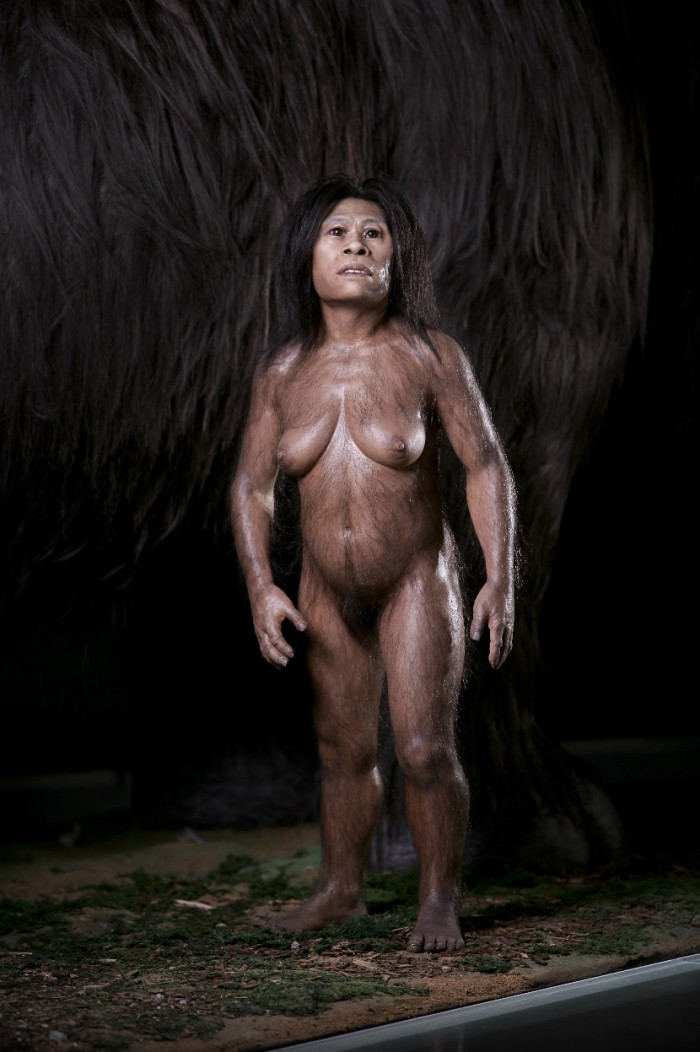지지씨
Evolution of Humanity, the Great March Forward - 2. Into Eurasia
In 1887, the Dutch paleoanthropologist Eugène Dubois traveled to Java Island, Indonesia, to find fossil evidence of human evolution. After several years of continuous excavations, he miraculously discovered fossil hominids in 1891, including a skullcap and a femur from the bank of the Solo River at Trinil in East Java. In 1894, Dubois named the species Pithecanthropus erectus (later classified as Homo erectus, meaning ‘upright man’), as he thought the fossil was the transitional form - the so-called ‘missing link’ - between apes and humans, because at that time, people believed that the human ancestor was the ‘erect ape-man’.

Place of Settlement: Java, Indonesia / Period: Approx. 800,000 years ago / Discovery Site: Sangiran, Indonesia / Species: Homo erectus / Cranial Capacity: 1029cc / Major Characteristics: The fossil is a significant discovery, showing that the hominin species settled in another continent out of Africa.
Then, in 1969, a farmer found a well-preserved skull fossil in a field in Sangiran, Central Java. This fossil, named Sangiran 17, has a smaller brain than Homo sapiens, and displays the typical characteristics of H. erectus such as large brow ridges and a less protrusive lower yet strong jaw. Therefore, Sangiran 17 was also classified as Homo erectus along with the fossils found by Dubois. Pithecanthropus erectus (later classified as Homo erectus), which is also known as Java Man, constitutes evidence that the species rapidly spread out eastwards and out of Africa. The multi-regional evolution theory used Indonesia’s Java Man as its theoretical basis for a long time, explaining that modern humans evolved from H. erectus in many other regions of the world one to two million years ago. However, the ‘out of Africa’ theory is now the most widely accepted model, suggesting that the ancestors of modern humans appeared about 150,000 years ago, based on recent studies of mitochondrial DNA.

Place of Settlement: Around Beijing, China / Period: About 700,000-300,000 years ago / Discovery Site: The Lower Cave at Locality 1 of the Site at Zhoukoudian, near Beijing, in China / Species: Homo erectus / Cranial Capacity: 1043cc / Major Characteristics: Use of fire.
In the 1920s, some fossils excavated from an ancient cave at Zhoukoudian (near Beijing) in China were sold as precious medicinal substances called ‘dragon bones’. Later, they were surprisingly identified as fossil hominids. During the 1930s, an excavation-investigation was conducted at the cave in Zhoukoudian during which the fossils of forty individual human specimens were uncovered. Unfortunately, the fossils were lost during the Second World War, and only the replica of a cranium has been preserved. The fossils of Beijing Man exhibit the typical characteristics of H. erectus, such as a long cranium with an external occipital protuberance, an inclined forehead, and heavy brow ridges. The species was named ‘Beijing Man’ after the location of the discovery site. Through an archaeological analysis of the findings, including animal remains and pollen excavated together with the fossils, it was confirmed that the species lived about 400,000 to 500,000 years ago. In particular, as the remains of ashes were also found in the ground where the fossils were excavated, there is a great possibility that Beijing Man used fire. Beijing Man constitutes invaluable evidence to support the theory that H. erectus left Africa and adapted to diverse environments, and lived widely throughout Asia.

Place of Settlement: Indonesia / Period: 18,000-95,000 years ago / Discovery Site: Liang Bua Cave on the island of Flores in Indonesia / Species: Homo floresiensis / Nick-name: Hobbit / Cranial Capacity: 417cc / Major Characteristics: A small body that evolved as a result of adaptation to the isolated environment of the island.
In 2003, a joint Indonesian-Australian research team discovered an unusual looking skull in Liang Bua Cave on the island of Flores in Indonesia. Although the skull was as small as that of a modern human child, its teeth were much worn and appeared to be those of an adult. The discoverers assigned the skeleton to a new species, Homo floresiensis, named after the island on which it was discovered. H. floresiensis was later nicknamed the ‘Hobbit’, after the fictional race of dwarf-like people popularized in J.R.R. Tolkien’s books The Hobbit and The Lord of the Rings and the eponymously titled movies. LB-1, a fairly complete skeleton of H. floresiensis including a nearly complete cranium, was discovered to be a 30-year-old female only a little over 1m tall. Her brain was as small as that of an anthropoid. Judging from the stone tools that were discovered together with the skeleton, it is assumed that H. floresiensis hunted animals and was skilled in the use of stone tools. H. floresiensis, who lived about 18,000 years ago, is regarded as an astonishing piece of evidence in human evolutionary research. Although there has been considerable scientific debate over whether H. floresiensis was a modern human with a disease or growth disorder, most scientists recognize that H. floresiensis evolved into a species with a small body due to long-term isolation on the island and limited food resources. There are still a number of puzzling questions to figure out, such as how H. floresiensis evolved such a tiny body under what kind of circumstances, and how H. floresiensis is related to modern humans in evolutionary history.

Place of Settlement: Europe and West Asia / Period: About 30,000-200,000 years ago / Discovery Site: The Neander Valley in Germany; La Chapelle-aux-Saints and La Ferrassie in France; Shanidar Cave in Iraq; Okladnikov Cave in Russia, and so on. / Species: Homo neanderthalensis / Nick-name: Goliath, Old Man / Cranial Capacity: 1625cc / Major Characteristics: The species had a large cranial capacity, robust build, and a strong sense of community.
In 1856, a group of limestone miners found some strange looking bones in the Neander Valley, Dusseldorf, in Germany. Originally they were thought to be the bones of a bear, but eight years later, the remains were identified as a new species of hominin and classified as Homo neanderthalensis. Later, many more remains of H. neanderthalensis were discovered throughout Europe and West Asia.
Some defining features of H. neanderthalensis include its large face, angled jaw, and huge nose, as well as its more robust build compared with modern humans, which enabled it to adapt to the cold climate. Neanderthals lived between about 200,000 years and 30,000 years ago, withstanding the cold climate during the Ice Age in Europe and parts of West Asia. Neanderthals were good at making stone tools with relatively advanced technology, including sophisticated flake tools with a sharp edge, picks, and stone cleavers to hunt big animals. They also knew how to control and use fire. In addition, they made and wore clothing made from animal skins for protection against the cold weather, and made ornamental objects, too. According to an archaeological document, they also buried their dead and sometimes even marked the graves with offerings of flowers. Neanderthals probably had an unsophisticated language. Neanderthals died out in Europe about 30,000 years ago sometime after Homo sapiens arrived in Europe. The reason for Neanderthal man’s extinction is still a mystery – it is not clear whether Neanderthals were unable to survive the competition with H. sapiens or not. The results of DNA analyses of Neanderthals’ fossils have shown that Neanderthals and modern humans do not share any mitochondrial DNA, meaning that the two species are different genetically. However, certain scientists still assert that the two species are related genetically. We expect that further DNA studies and new excavations of Neanderthals will help us to identify the relationship between modern humans and Neanderthals in our evolutionary history.
Place of Settlement: Europe and West Asia
Period: About 30,000-200,000 years ago
Discovery Site: The Neander Valley in Germany; La Chapelle-aux-Saints and La Ferrassie in France; Shanidar Cave in Iraq; Okladnikov Cave in Russia, and so on.
<ggc의 모든 콘텐츠는 저작권법의 보호를 받습니다.>
- 글쓴이
- 지지씨
- 자기소개